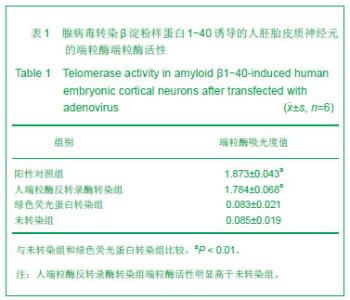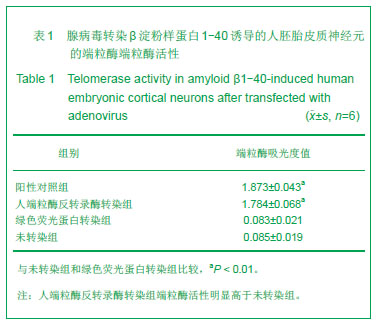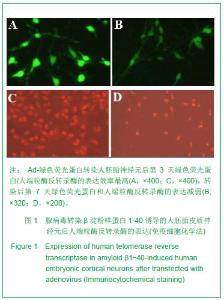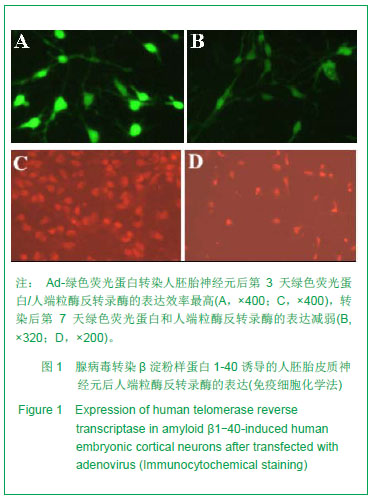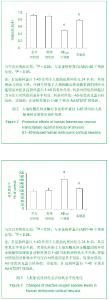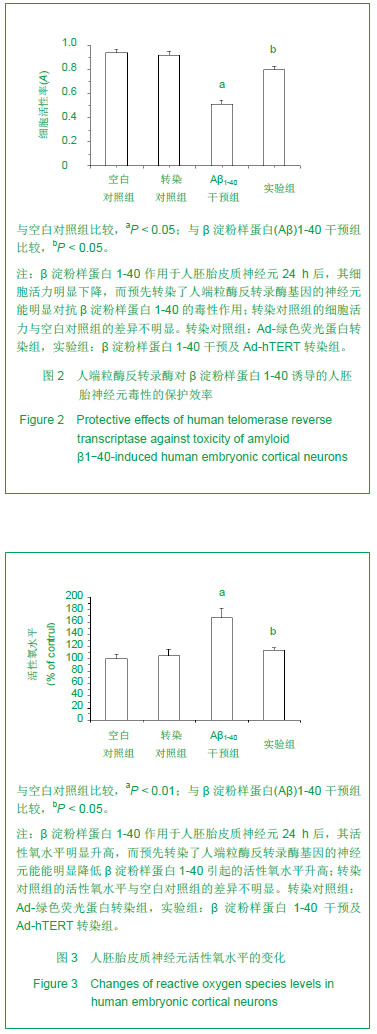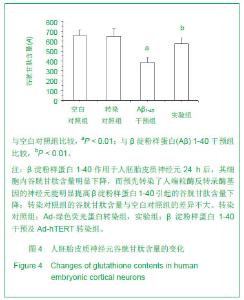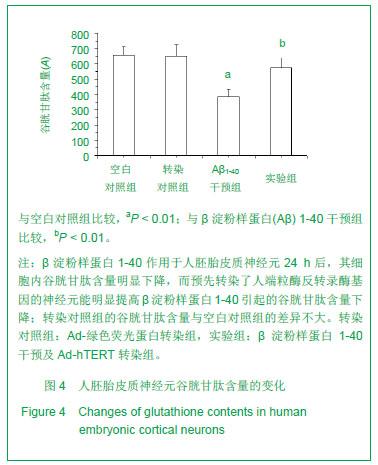| [1]Thies W, Bleiler L. Alzheimer's Association. 2013 Alzheimer's disease facts and figures. Alzheimers Dement. 2013;9(2): 208-245. [2]Axelsen PH, Komatsu H, Murray IV. Oxidative stress and cell membranes in the pathogenesis of Alzheimer's disease. Physiology (Bethesda). 2011;26(1):54-69.[3]Serrano-Pozo A, Frosch MP, Masliah E, et al. Neuropathological alterations in Alzheimer disease. Cold Spring Harb Perspect Med. 2011;1(1):a006189. [4]Galante D, Corsaro A, Florio T, et al. Differential toxicity, conformation and morphology of typical initial aggregation states of Aβ1-42 and Aβpy3-42 beta-amyloids. Int J Biochem Cell Biol. 2012;44(11):2085-2093. [5]Zhang J, Zhen YF, Pu-Bu-Ci-Ren, et al. Salidroside attenuates beta amyloid-induced cognitive deficits via modulating oxidative stress and inflammatory mediators in rat hippocampus. Behav Brain Res. 2013;244:70-81. [6]Hoshi A, Yamamoto T, Shimizu K, et al. Characteristics of aquaporin expression surrounding senile plaques and cerebral amyloid angiopathy in Alzheimer disease. J Neuropathol Exp Neurol. 2012;71(8):750-759. [7]Rubtsova MP, Vasilkova DP, Malyavko AN, et al.Telomere lengthening and other functions of telomerase. Acta Nutr. 2012;4(2):44-61. [8]Chung HK, Cheong C, Song J, et al. Extratelomeric functions of telomerase. Curr Mol Med. 2005;5(2):233-241. [9]Niu C, Yip HK. Neuroprotective signaling mechanisms of telomerase are regulated by brain-derived neurotrophic factor in rat spinal cord motor neurons. J Neuropathol Exp Neurol. 2011;70(7):634-652. [10]Smith JA, Park S, Krause JS, et al. Oxidative stress, DNA damage, and the telomeric complex as therapeutic targets in acute neurodegeneration. Neurochem Int. 2013;62(5):764-775. [11]Indran IR, Hande MP, Pervaiz S. hTERT overexpression alleviates intracellular ROS production, improves mitochondrial function, and inhibits ROS-mediated apoptosis in cancer cells. Cancer Res. 2011;71(1):266-276. [12]Fu W, Begley JG, Killen MW, et al. Anti-apoptotic role of telomerase in pheochromocytoma cells. J Biol Chem. 1999; 274(11):7264-7271. [13]Ahmed S, Passos JF, Birket MJ, et al. Telomerase does not counteract telomere shortening but protects mitochondrial function under oxidative stress. J Cell Sci. 2008;121(Pt 7): 1046-1053. [14]张洁,廖亚平,吴灵芝,等.hTERT基因转染对人胚胎大脑皮质神经元生长的影响[J].解剖学研究,2008,30(4):251-254. [15]Kong LP, Wu LZ, Zhang J, et al. Neuroprotective effects of human telomerase reverse transcriptase on beta-amyloid fragment 25-35-treated human embryonic cortical neurons. Neural Regen Res. 2009;4(6):405-412. [16]State Council of the People's Republic of China. Administrative Regulations on Medical Institution. 1994-09-01.[17]Chandler HL, Webb TR, Barden CA, et al. The effect of phosphorylated Akt inhibition on posterior capsule opacification in an ex vivo canine model. Mol Vis. 2010;16: 2202-2214. [18]Lustbader JW, Cirilli M, Lin C, et al. ABAD directly links Abeta to mitochondrial toxicity in Alzheimer's disease. Science. 2004; 304(5669):448-452. [19]Casley CS, Land JM, Sharpe MA, et al. Beta-amyloid fragment 25-35 causes mitochondrial dysfunction in primary cortical neurons. Neurobiol Dis. 2002;10(3):258-267. [20]Casley CS, Canevari L, Land JM, et al. Beta-amyloid inhibits integrated mitochondrial respiration and key enzyme activities. J Neurochem. 2002;80(1):91-100. [21]Lamy E, Herz C, Lutz-Bonengel S, et al. The MAPK pathway signals telomerase modulation in response to isothiocyanate-induced DNA damage of human liver cancer cells. PLoS One. 2013;8(1):e53240. [22]Zhu H, Fu W, Mattson MP. The catalytic subunit of telomerase protects neurons against Amyloid β-Peptide-Induced apoptosis. J Neurochem. 2000;75(1):117-124.[23]Lu C, Fu W, Mattsop MP. Telomerase protects developing neurons against DNA damage–induced cell death. Brain Res Dev Brain Res. 2001;131(122):167-171.[24]Ren JG, Xia HL, Tian YM, et al. Expression of telomerase inhibits hydroxyl radical-induced apoptosis in normal telomerase negative human lung fibroblasts. FEBS Lett. 200; 488(3):133-138. [25]Huang XQ, Wang J, Liu JP, et al. hTERT extends proliferative lifespan and prevents oxidative stress-induced apoptosis in human lens epithelial cells. Invest Ophthalmol Vis Sci. 2005; 46(7):2503-2513. [26]Armstrong L, Saretzki G, Peters H, et al. Overexpression of telomerase confers growth advantage, stress resistance, and enhanced differentiation of ESCs toward the hematopoietic lineage. Stem Cells. 2005;23(4):516-529. [27]Massard C, Zermati Y, Pauleau AL, et al. hTERT: a novel endogeneous inhibitor of the mitochondrial cell death pathway. Oncogene. 2006;25(33):4505-4514. [28]Yin L, Hubbard AK, Giardina C, et al. NF-κB regulates transcription of the mouse telomerase catalytic subunit. J Biol Chem. 200;275(47):36671-36685. [29]Ohyagi Y, Asahara H, Chui DH, et al. Intracellular Abeta42 activates p53 promoter: a pathway to neurodegeneration in Alzheimer's disease. FASEB J. 2005;19(2):255-257. [30]Farsetti A, Grasselli A, Bacchetti S, et al. The telomerase tale in vascular aging: regulation by estrogens and nitric oxide signaling. J Appl Physiol. 2009;106(1):333-337. [31]Bagheri S, Nosrati M, Li S, et al. Genes and pathways downstream of telomerase in melanoma metastasis. PNAS. 2006;103(30):11306-11311. [32]Santos JH, Meyer JN, Van Houten B. Mitochondrial localization of telomerase as a determinant for hydrogen peroxideinduced mitochondrial DNA damage and apoptosis. Hum Mol Genet. 2006;15(11):1757-1768. |
